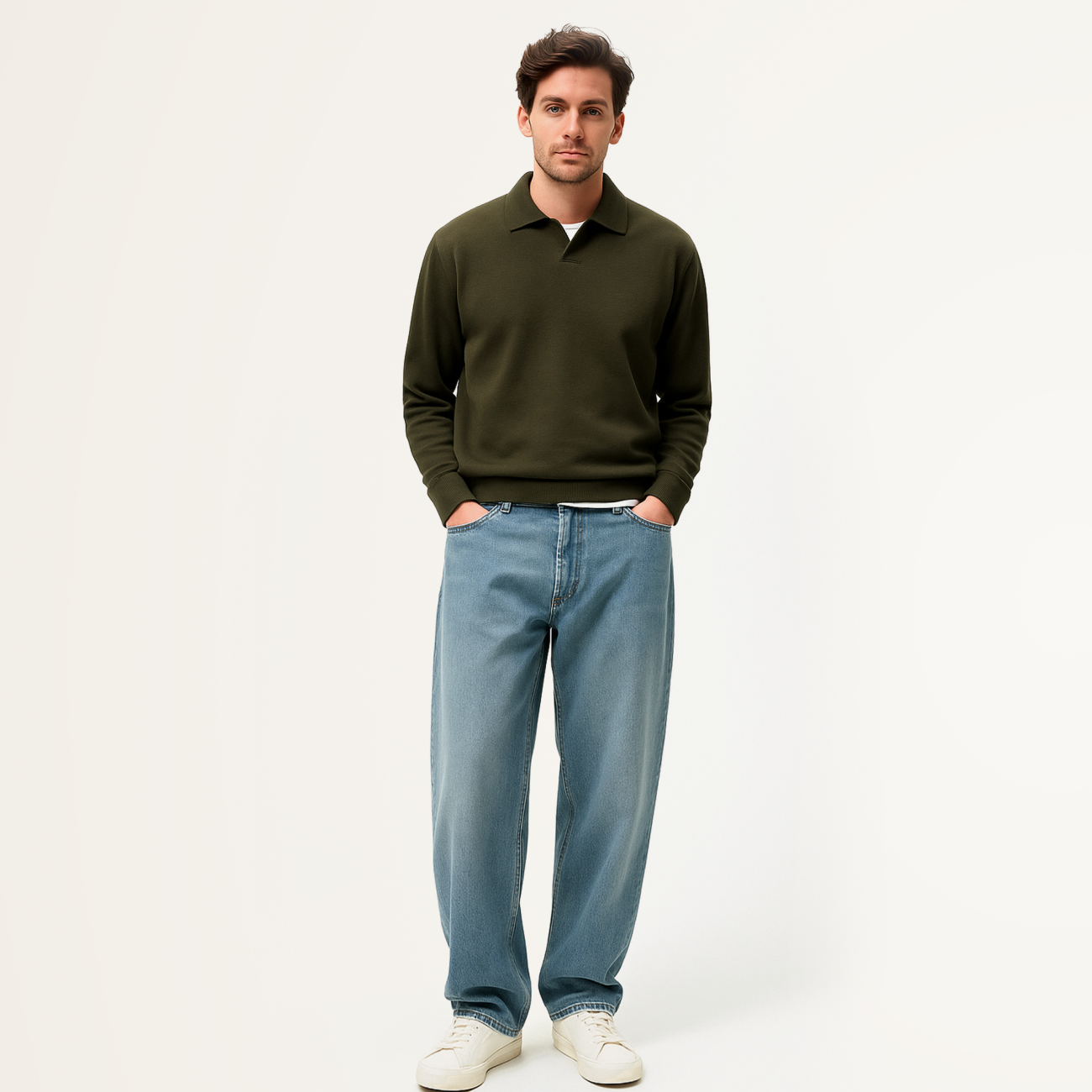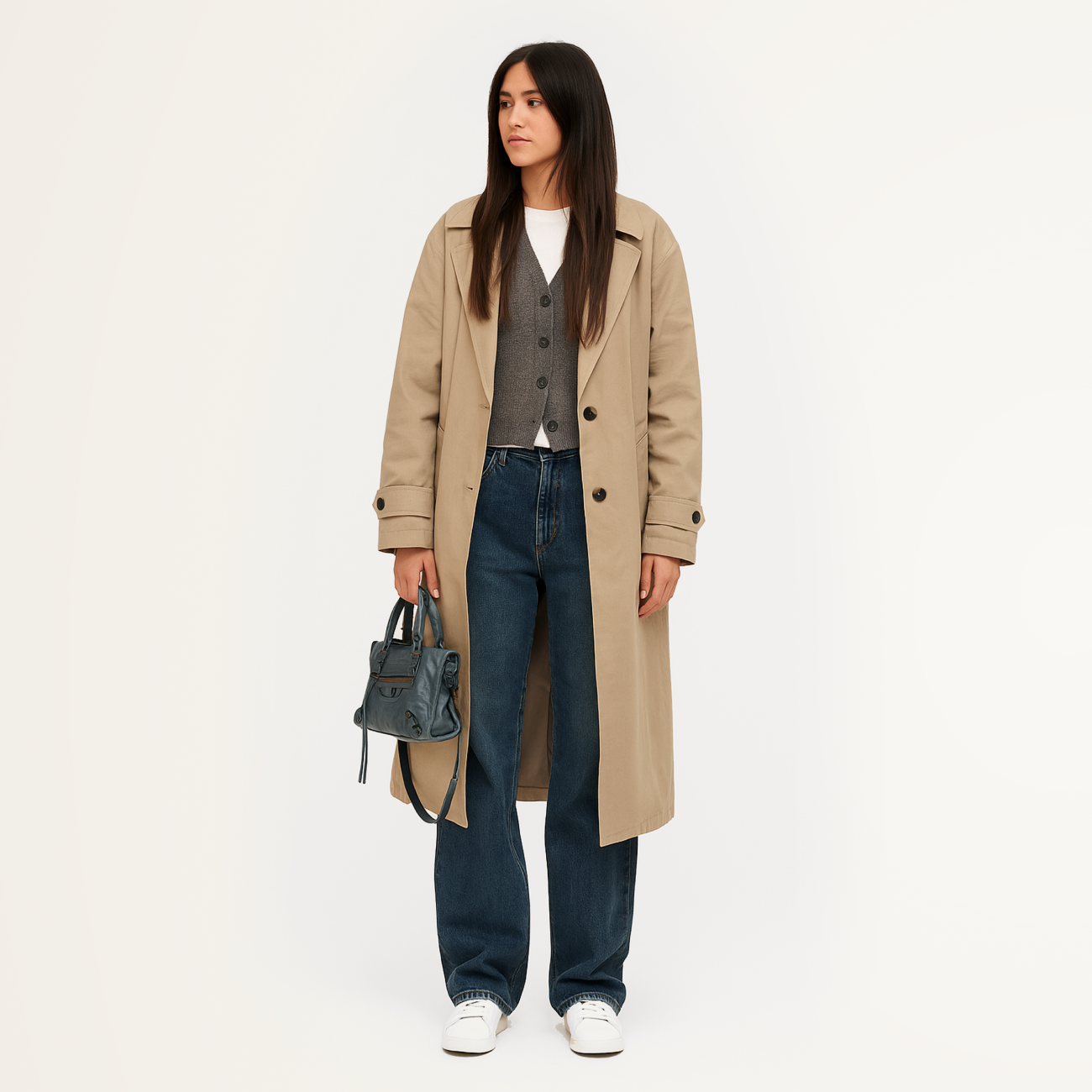Casual
Casual is all about freedom of choice, self-expression, and comfort. The style isn’t bound by strict rules or trends, which allows people to create looks based on how they feel and the context of their day. Unlike business or formal wear, casual style strikes a balance between ease and aesthetics. At its core lies the idea that a person should feel confident and relaxed in everyday life. Casual is a way to express individuality through simple yet thoughtful details.
History
Casual style is more than just clothing — it’s a cultural phenomenon born from historical shifts and subcultures that shaped the face of today’s streetwear. It embodies the spirit of various movements: from the dapper looks of Teddy Boys to football fans blending sportswear with classic elements.
Casual style traces its origins to the early 20th century, when fashion began to shift away from formal attire toward more comfortable and practical clothing. This was a time when social and cultural changes began to reflect in people’s appearance. A key turning point came after World War II, as American culture influenced mass clothing production and popularized wardrobe staples like jeans and T-shirts. In the 1970s and 1980s, casual style evolved further, becoming a symbol of freedom, self-expression, and individuality.
At its core, the philosophy of casual style lies in comfort, practicality, and simplicity, infused with personal identity. Casual breaks away from rigid dress codes, offering clothing that allows people to feel natural and confident in everyday situations. Despite its relaxed nature, casual style embraces stylish and modern interpretations, making it one of the most versatile and expressive approaches to dressing.
Signature elements of the style
Color palette
All colors are acceptable in casual style, with a preference for neutral, calm, and nature-inspired shades: black, white, grey, beige, blue, khaki. These tones are easy to mix and match and don’t draw unnecessary attention. Brighter accents can be used to add individuality and highlight specific details.
Prints
Prints in casual style are minimal and restrained. The most common are classic stripes, checks, or geometric patterns. The key rule — prints should be subtle and easily combined with the rest of the outfit.
T-shirts with text are also popular, often used to express one’s philosophy or mood.
Textures
Natural fabrics play an important role — cotton, linen, wool. These materials offer simplicity and comfort, perfectly aligning with the essence of the style. With the evolution of the fashion industry, synthetic fabrics have also become part of the casual wardrobe.
In the fall and winter seasons, heavier textures like knitwear, tweed, and suede are often used. Textures help create depth and layering in looks.
Cuts & silhouette
Loose and semi-loose fits are the foundation of casual style. Clothing should not restrict movement and should feel relaxed and effortless.
Maintaining balance and proportion is key in casual style: for example, if the top is oversized, the bottom can be slimmer — like skinny jeans or tapered trousers.
Simplicity in tailoring is expressed through straight lines, minimal decorative details, and functionality.
Wardrobe essentials
- Basic T-shirts, tops, and polo shirts: solid colors or with minimalist prints
- Sweaters, hoodies, and sweatshirts with or without hoods
- Jackets and parkas
- Jeans — arguably the key element of casual style. Classic blue or black jeans in straight or slightly tapered cuts are universally versatile
- Chinos — a popular alternative to jeans
- Sneakers, trainers, and flat-soled boots
Substyles
- Business Casual: A style suitable for office environments without a strict dress code, maintaining a certain level of formality.
- Smart Casual: A more refined and polished version of casual, combining comfort with elements of business attire.
- Casual Chic: This style blends relaxed, everyday clothing with elegant and sophisticated details.
- Sport Casual: A mix of sportswear and everyday clothing, popularized by the trend toward comfort and active lifestyles.
- Street Casual: Inspired by street fashion, this style often features streetwear elements and expresses individuality through bold or unconventional details.
Email: support@belt-app.com


















